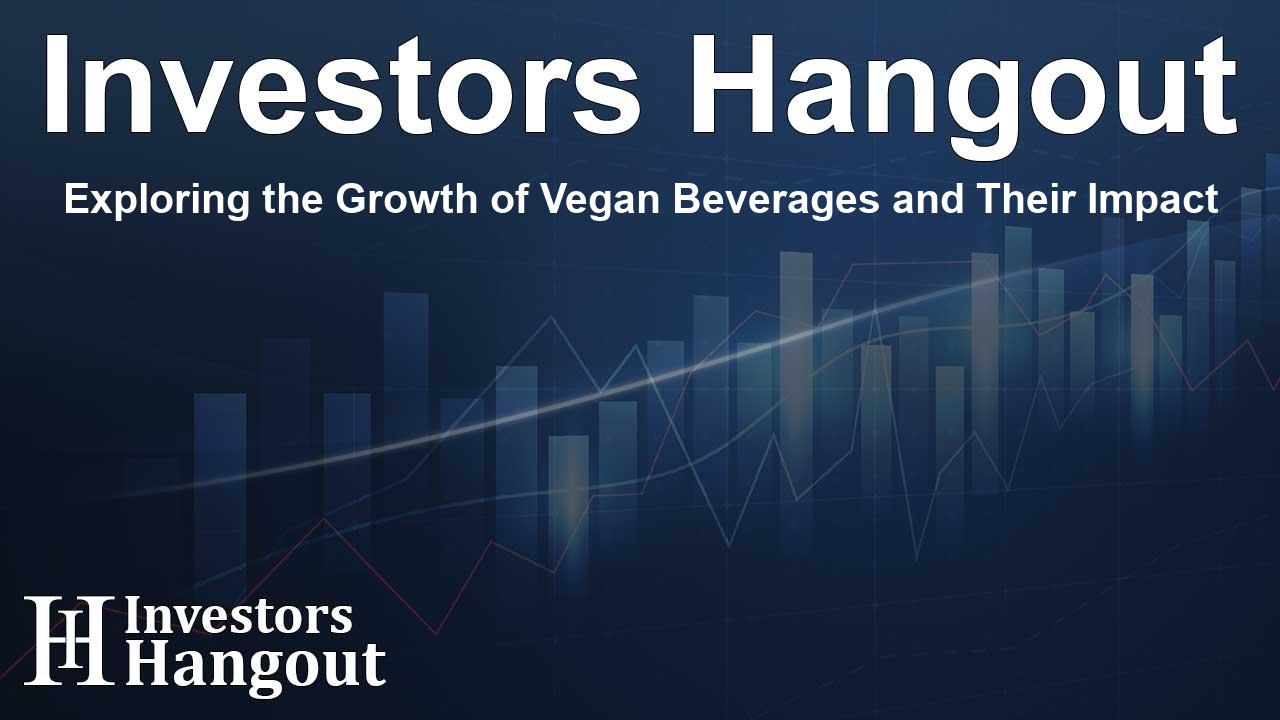Exploring the Growth of Vegan Beverages and Their Impact

Vegan Beverages Market Overview
The vegan beverages market is experiencing remarkable growth, starting from an estimated valuation of USD 19.06 billion in 2024. Projections indicate an impressive rise to about USD 61.89 billion by 2034, driven by a compound annual growth rate (CAGR) of 12.5% between 2025 and 2034. This growth is being propelled by various factors, including the rising populace of vegans and an increase in consumers opting for plant-based diets.
Market Dynamics and Growth Drivers
Engagement in vegan lifestyles is on the rise, accompanied by an escalating awareness surrounding sustainability and the ethical implications of dietary choices. There is a significant correlation between the increasing number of lactose-intolerant individuals and the heightened demand for plant-based alternatives, all contributing to the market's evolution.
The Influence of Millennials and Gen Z
Notably, millennials and Generation Z are key players in this market shift, particularly in urban locales. Their inclination towards health-conscious and sustainable products adds vitality to the growing vegan beverage sector. Numerous brands are tailoring their offerings to cater to these demographics, promoting health benefits and environmental responsibility.
Insights into Market Composition
The vegan beverages market comprises a diverse range of products, including a variety of dairy alternatives made from plant components such as nuts, seeds, fruits, and vegetables. The demand for vegan beverages in everyday diets has expanded as consumers increasingly seek nutritious options free from animal-derived ingredients.
Regional Analysis: North America vs. Asia Pacific
North America dominated the vegan beverages scene in 2024, claiming 38% of the market share. The region's focus on ready-to-drink and functional beverages led to its prominent market position. Conversely, the Asia Pacific is set to witness the fastest growth rate due to the increasing vegan population and growing environmental consciousness among consumers.
Key Trends in Vegan Beverages
Several trends are shaping the vegan beverages industry, including:
- Increased demand for protein-enriched food and beverages, underlining a global movement towards health and well-being.
- Consumers are more aware of the health benefits associated with plant-based diets, propelling market growth.
- The availability of vegan products in supermarkets and online channels has made plant-based options increasingly accessible.
- Innovative and sustainable packaging solutions, which cater to the needs of on-the-go consumers, play a crucial role in market development.
Product Types and Consumer Preferences
Plant-based milk alternatives have emerged as dominant players in the market, representing an estimated 42% share in 2024. Varieties such as almond, soy, and oat milk appeal to health-conscious consumers looking for satisfying dairy alternatives. Additionally, functional beverages that incorporate prebiotics and probiotics are gaining popularity, aligning with the wellness trends among modern consumers.
Packaging Innovations
Tetra Pak cartons maintained the largest market share in 2024 with approximately 38%. The convenience they provide in extending product shelf life while being sustainable resonates with today's environmentally conscious consumers. Cans are also projected to grow swiftly due to their portability and efficiency.
Challenges and Opportunities
Despite the robust growth, challenges remain—primarily high production costs associated with manufacturing plant-based beverages. Special ingredients and techniques contribute to final product pricing, potentially alienating cost-sensitive consumers. However, opportunities abound as the plant-based protein segment continues to see growing acceptance, especially among athletes who prioritize nutrient-dense options for enhancing performance and recovery.
Market Future Outlook
The future of the vegan beverages market appears bright, with numerous brands actively expanding their offerings to include innovative products that meet consumer demand for health and sustainability.
Frequently Asked Questions
What is the projected size of the vegan beverages market by 2034?
The vegan beverages market is expected to reach USD 61.89 billion by 2034.
Which demographic is driving the demand for vegan beverages?
Millennials and Generation Z are significantly influencing the demand due to their focus on health and sustainability.
What factors contribute to the growing preference for plant-based drinks?
Increasing lactose intolerance, health awareness, and environmental concerns are key drivers influencing consumer choices.
Which region is currently leading the vegan beverages market?
North America led the market in 2024, marked by a strong preference for ready-to-drink beverages.
What types of packaging are preferred in the vegan beverage market?
Tetra Pak cartons and cans are popular packaging choices due to their convenience and eco-friendly attributes.
About The Author
Contact Thomas Cooper privately here. Or send an email with ATTN: Thomas Cooper as the subject to contact@investorshangout.com.
About Investors Hangout
Investors Hangout is a leading online stock forum for financial discussion and learning, offering a wide range of free tools and resources. It draws in traders of all levels, who exchange market knowledge, investigate trading tactics, and keep an eye on industry developments in real time. Featuring financial articles, stock message boards, quotes, charts, company profiles, and live news updates. Through cooperative learning and a wealth of informational resources, it helps users from novices creating their first portfolios to experts honing their techniques. Join Investors Hangout today: https://investorshangout.com/
The content of this article is based on factual, publicly available information and does not represent legal, financial, or investment advice. Investors Hangout does not offer financial advice, and the author is not a licensed financial advisor. Consult a qualified advisor before making any financial or investment decisions based on this article. This article should not be considered advice to purchase, sell, or hold any securities or other investments. If any of the material provided here is inaccurate, please contact us for corrections.
